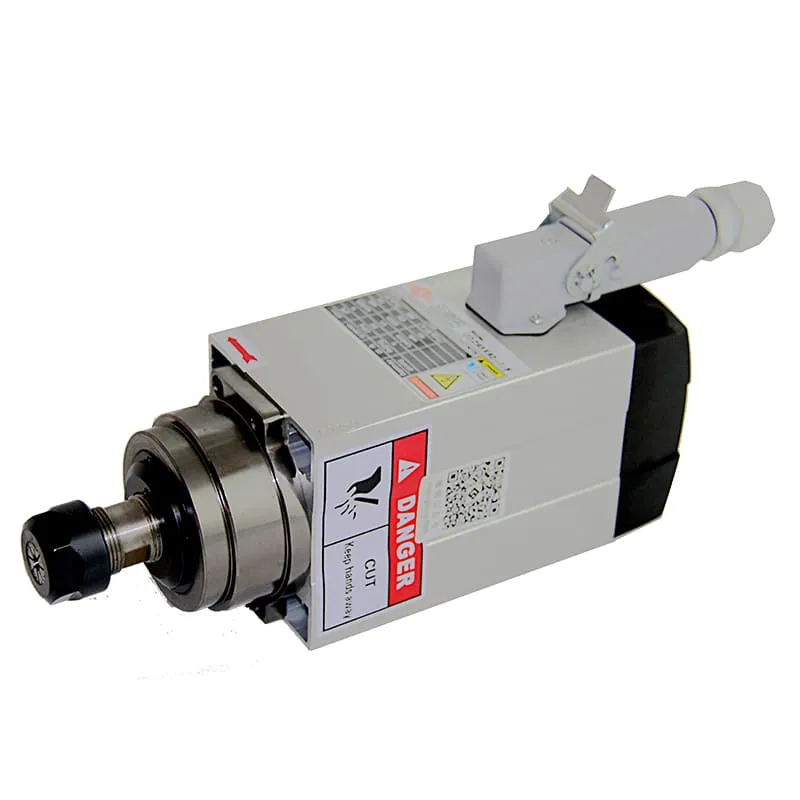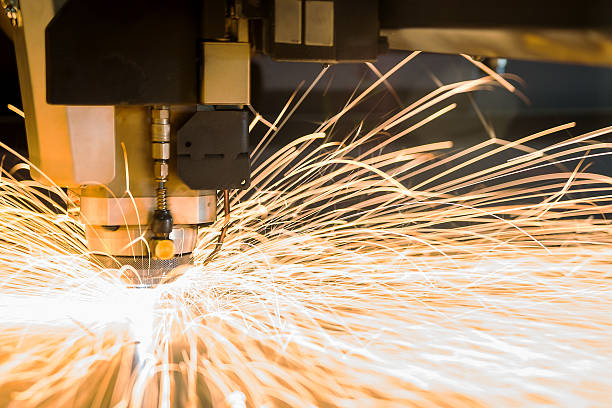How Much Does a CNC Plasma Cutter Cost?
How much does a CNC plasma cutter cost? This is a common question for anyone interested in enhancing their metalworking capabilities or establishing a CNC plasma cutting business. Plasma cutters are versatile tools used for cutting a wide range of materials, including steel, aluminum, and other metals, with precision and efficiency. Their popularity spans from hobbyists to professional fabrication shops due to their ability to produce clean, accurate cuts at a fast rate. In this article, we will discuss everything you need to know about the cost of CNC plasma cutters, including the factors influencing prices, types of machines, and whether investing in one is worth it for your business.
Understanding CNC Plasma Cutting Technology
1. What is CNC Plasma Cutting?
CNC plasma cutting is a process that involves using a high-velocity jet of ionized gas, or plasma, to cut through various types of metals. The term CNC stands for Computer Numerical Control, which means that the cutting operation is controlled by a computer, allowing for precise and consistent cuts.
A CNC plasma table usually consists of a cutting table, a plasma torch, and a computer that drives the entire system. The computer controls the movement of the torch along the X, Y, and Z axes, and the user can input specific coordinates to make intricate and accurate cuts.
“The ability to cut through thick metals with ease is one of the biggest advantages of CNC plasma cutting.”
Some of the industries that benefit from CNC plasma cutting include automotive manufacturing, construction, custom metal fabrication, and even artistic metalworking.
Explore our selection of high-quality CNC spindle motors for precise machining.
2. How Does a CNC Plasma Cutter Work?
The process of plasma cutting begins when an electric arc is generated between an electrode and the metal being cut. This arc heats up the gas to a temperature that turns it into plasma, which is then expelled through a fine nozzle at high speed. This high-velocity plasma effectively cuts through the metal, while the CNC machine ensures the precise movement of the torch.
- Cutting Torch: The torch holds the electrode and directs the plasma onto the material.
- Power Supply: The power supply provides the energy needed to create the plasma.
- Control System: The control system, powered by CNC software, directs the movements of the cutting torch, ensuring the desired pattern or shape is achieved.
The efficiency and speed of plasma cutting make it a popular choice for cutting steel and other metals, where precision and quick turnaround times are crucial.
Learn more about CNC Spindle Motors to improve accuracy in your metalworking processes.

Types of CNC Plasma Cutters and Their Costs
1. Entry-Level CNC Plasma Cutters
Entry-level CNC plasma cutters are designed for hobbyists or small workshops that do not require extensive power or sophisticated technology. These plasma cutters typically come with smaller tables, a less powerful plasma torch, and limited cutting capabilities.
- Cost Range: The price for entry-level CNC plasma cutters can range from $2,000 to $5,000.
- Use Cases: These machines are ideal for small projects, DIY tasks, and non-commercial use where cutting through light materials like thin steel or aluminum is the main requirement.
- Pros and Cons: They are affordable and easy to use but have limitations in terms of material thickness and cutting precision.
Consider using a 1.5KW ER11 Square Air-Cooled Spindle with Flange to enhance precision in cutting smaller workpieces.

2. Mid-Range CNC Plasma Cutters
Mid-range plasma cutters are a step up from the entry-level versions, offering more power and larger cutting areas. These machines are capable of cutting thicker metals with greater precision and are typically used by small to medium-sized fabrication shops.
- Cost Range: Mid-range CNC plasma cutters can cost between $6,000 to $15,000.
- Use Cases: They are suitable for commercial use, particularly in shops that need to cut mild steel, stainless steel, or aluminum in moderate quantities.
- Pros and Cons: These machines provide better cut quality and greater versatility but are more expensive and require more training for effective use.
Check out our 2.2KW ER20 Air-Cooled Spindle for increased power and versatility in mid-range CNC applications.

3. High-End CNC Plasma Cutters
High-end CNC plasma cutters are designed for large-scale operations, such as industrial manufacturing or large fabrication shops. These plasma cutters come with advanced features, including automatic torch height control, advanced CNC software, and larger cutting tables capable of handling thicker metals.
- Cost Range: High-end CNC plasma cutters are generally priced between $20,000 to $50,000 or more, depending on the machine’s size, power, and features.
- Use Cases: These machines are built for heavy-duty use and can cut through thick materials quickly and precisely, making them ideal for industries that require high output and quality.
- Pros and Cons: They offer excellent cut quality, high speed, and versatility, but they are a significant investment and require a larger workshop area for installation.
Discover our 3.5KW ER25 Air-Cooled Spindle for industrial applications that demand high efficiency and consistent performance.

Factors Influencing the Cost of CNC Plasma Cutters
1. Table Size and Cutting Area
The size of the cutting table significantly affects the cost of a CNC plasma cutter. Larger tables allow for the cutting of bigger sheets of metal, which increases productivity by reducing the number of repositionings required during the cutting process.
- Small Tables: Entry-level plasma cutters often come with smaller tables, ideal for hobbyists and costing less.
- Large Industrial Tables: Industrial-grade machines come with tables capable of handling full sheets of steel, significantly increasing their price.
2. Power Source and Plasma Torch Quality
The quality of the plasma torch and the power of the power source also influence the cost. A higher wattage plasma torch provides better cut quality, allows for cutting thicker materials, and increases the machine’s overall versatility.
- Low-Wattage Plasma Torches: Suitable for light-duty work, cutting up to 0.5-inch thick steel. These torches are commonly found in entry-level machines.
- High-Wattage Plasma Torches: Capable of cutting thicker steel up to 2 inches or more, typically found in mid to high-end plasma cutters.
3. Automation Features and Software
Modern CNC plasma cutting systems often include automation features such as torch height control, automatic nesting, and CAD/CAM software. These features significantly enhance the cutting quality and efficiency but also add to the overall cost.
- Torch Height Control: Adjusts the height of the torch automatically to maintain a consistent gap between the torch and the material, resulting in better cut quality.
- CAD/CAM Integration: High-end machines often come with integrated CAD/CAM software, which streamlines the entire cutting process, making the machine easier to operate.
Learn more about our CNC Router Spindles to enhance the automation features of your CNC plasma systems.
Benefits of Investing in a CNC Plasma Cutter
1. Precision and Quality
One of the significant benefits of using a CNC plasma cutter is the precision it offers. The CNC control ensures that every cut follows the exact coordinates inputted, reducing the chances of errors and waste.
- Consistent Quality: CNC plasma cutters are capable of making repeated cuts with a high degree of accuracy, ensuring that each part is identical.
- Complex Cuts: The precision of CNC allows for the cutting of intricate designs and shapes, making it ideal for industries that require complex metal parts.
2. Efficiency and Productivity
CNC plasma cutting systems can significantly improve productivity, particularly in a business setting where large volumes of metal need to be cut regularly.
- Fast Cutting Speeds: Plasma cutters work much faster than manual cutting tools, which increases output while maintaining accuracy.
- Less Setup Time: Once the material is in place, the CNC machine takes care of the rest, minimizing manual intervention and reducing the overall setup time.
Find out more about Spindles for CNC Routers to increase the efficiency of your cutting operations.
Is a CNC Plasma Cutter Worth the Investment?
1. Return on Investment (ROI)
For businesses considering investing in a CNC plasma cutting system, it’s important to assess the return on investment (ROI). The main factors contributing to ROI include increased productivity, reduced labor costs, and the ability to take on more complex projects.
- Reduced Labor Costs: The automation provided by CNC plasma cutters means that less manual labor is needed, cutting down on costs.
- Increased Capabilities: The ability to handle a wider range of materials and more complex cuts allows businesses to expand their services, attracting more clients.
2. Potential Business Opportunities
Investing in a CNC plasma cutter can open new doors for metal fabrication shops, automotive part manufacturers, and custom metalworking businesses.
- Custom Metal Fabrication: Plasma cutters are ideal for custom work, such as making unique parts or artistic pieces.
- Automotive Parts: CNC plasma cutters can be used to fabricate custom car parts, giving businesses an opportunity to serve the growing market for automotive restorations and custom builds.
Conclusion: How Much Does a CNC Plasma Cutter Cost?
The cost of a CNC plasma cutter varies widely based on factors such as table size, torch power, and automation features. Entry-level machines can start around $2,000, while industrial-grade cutters can go beyond $50,000. Determining whether to invest in a CNC plasma cutter depends on your specific needs and the scale of your operations. For hobbyists, a smaller machine might suffice, while for industrial users, investing in a high-end plasma cutter could lead to greater efficiency and profits.
If you are looking to boost the efficiency of your metalworking operations, consider exploring our CNC spindle motors for increased productivity and precision.
FAQs
1. What factors affect the cost of a CNC plasma cutter?
The cost of a CNC plasma cutter is influenced by factors such as table size, plasma torch power, and the availability of automation features like torch height control and CAD/CAM integration.
2. Can a CNC plasma cutter cut all metals?
Yes, CNC plasma cutters are versatile and can cut a wide variety of metals, including steel, aluminum, brass, and copper.
3. What are the ongoing costs of operating a CNC plasma cutter?
The ongoing costs include power consumption, gas supply, replacement torches, and routine maintenance. Proper maintenance can reduce the likelihood of unexpected repairs.
4. Is a high-end CNC plasma cutter worth the investment for a small shop?
If your shop deals with high production volumes or needs to handle complex cuts regularly, a high-end CNC plasma cutter may be worth the investment for its speed, quality, and advanced features.
5. Can I use a CNC plasma cutter for artwork?
Absolutely! CNC plasma cutters are widely used by artists to create intricate metal art pieces, offering precision and versatility for custom designs.

